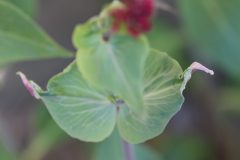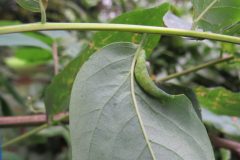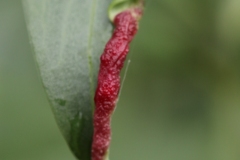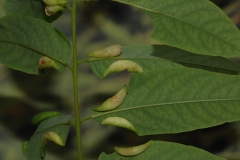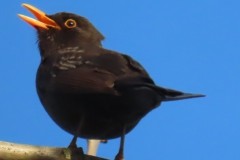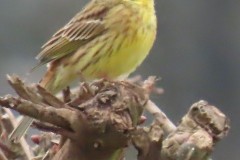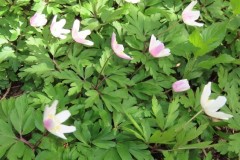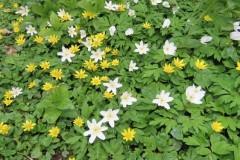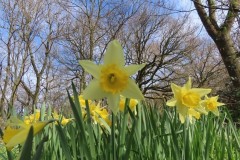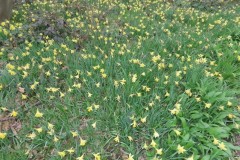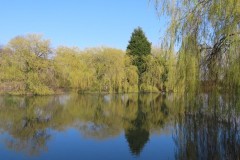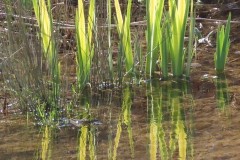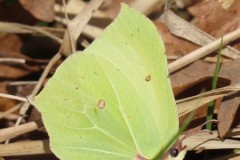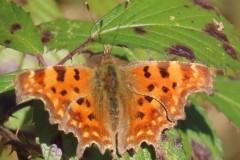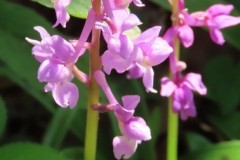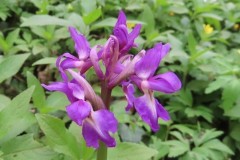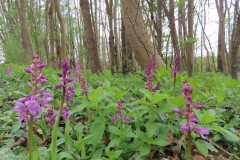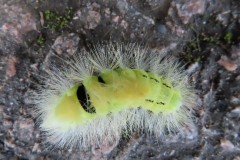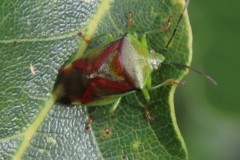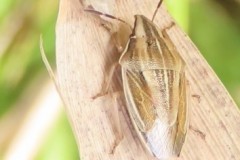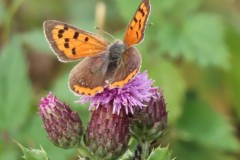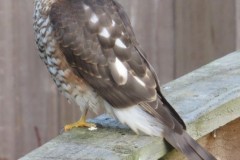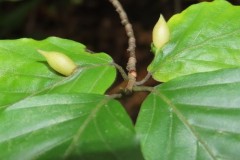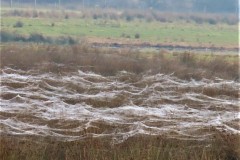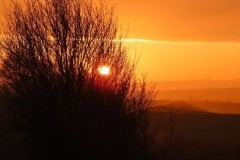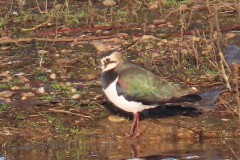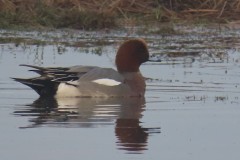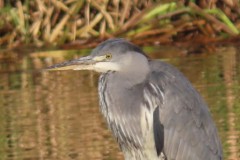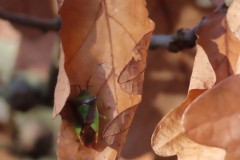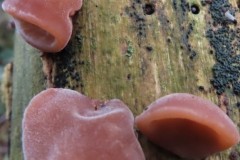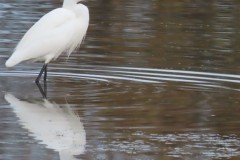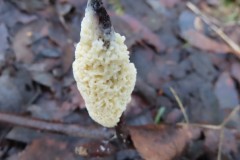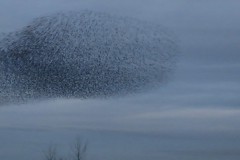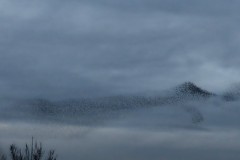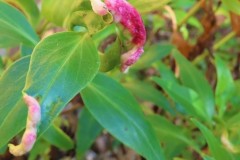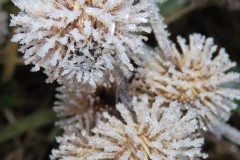Galls in the Garden
In 2017 Pip Seccombe invited me to look in her garden at a possible gall rolling the edge of a leaf of Red Valerian Centranthus ruber. Pip had been given the plant by a friend in Cambridgeshire. We came to the conclusion it was caused by a psyllid Trioza centranthi. This was probably the first Yorkshire record. Psyllids are bugs which suck the sap of different plants and some of them cause the formation of galls. They are often referred to as jumping plant-lice and tend to be host-specific, each plant-louse species only feeds on one plant species or feeds on a few closely related plants. In Cecidology Autumn 2016 , the journal of the Plant Gall Society, Brian Spooner an expert on plant galls and fungi indicated that Trioza centranthi was often found by the south coast or nearby, although he indicated there had been a few records from Worcestershire. In recent years this gall has become common in our gardens, rolling the leaves of Red Valerian. It is now common in my garden in Skellow. Friends have discovered it in the Darlington area. Please check the Red Valerian in your garden or neighbourhood and let me know if the leaves are galled.
I am also wondering how common is a midge gall Obolodiplosis robiniae which rolls the leaves of False Acacia, Robinia pseudacacia . False Acacia is a striking popular tree in gardens. The gall is a native of North America it was first recorded in England in 2007. In Suffolk in 2010 the gall was abundant but in more recent years seems to have become absent. I first saw the gall in Elmfield Park in 2014. Recently I am sure I saw the first stages on leaves of False Acacia in Sandall Park. I wonder how common it may be locally.
Green Lane
In the last few days early morning wanders have been enhanced by male Blackbirds establishing their territory with beautiful song, while the male Chiffchaffs have been leaping from tree-top to tree-top exclaiming their name. In Green Lane, which leads to the A1(M) it was a joy to see the Yellowhammers returning to their favourite hedgerow. Sadly, I didn’t hear the song ‘a-little-bit-of-bread-with- no-cheeeeeese’.
Harry Wood
Harry Wood, another local wood, is transformed by golden Celandines and the white drifts of Wood Anemones; a few flowers have pink pastel edges.
Hampole Wood
Hampole Wood in March is the place for our Spring pilgrimage, where our spirits are raised by the carpets of Wild Daffodils spreading between the Oaks and Hazels, almost caressing the edge of the footpaths, forcing one to stand and stare in amazement.
Highfields Lake
Highfields Lake, just a step from the Old Great North Road, now the A638, is a picturesque place for a walk. Decades ago, while Brodsworth Pit was still working it was a black shiny lake of coal dust polluted water. Now the emerging spring leaves of Willows and the shiny pale green leaves of Yellow Flag Iris form beautiful reflections in the clear water.
Brodsworth Wood
The spring sunshine in early March encouraged us to explore our local wildlife sites. Wandering towards Brodsworth Community Woodland was breath taking. Pale yellow Brimstone butterflies were exploring, twisting, turning between the Celandines and Wood Anemones, resting on autumn leaves while basking in the warm sunshine. Peacock butterflies were racing around sometimes seeming to be in aerial combat with each other. By dry paths the beautiful vivid orange of the Comma butterflies brought us to a halt to stand and gaze at the intricate wing patterns.
Woodlands near Burghwallis
The last week has been exciting exploring local woodlands near Burghwallis. A single-track minor road, Scorcher Hills Lane leads up to the A1. The minor road cuts through a small woodland, Scorcher Hills Wood before it reaches the A1. On the north side of the road I counted twenty-six Early Purple Orchids and while on the south side I discovered a colony of seventy-six orchids, some with appealing colour variations. In another small woodland not far from Burghwallis village over forty orchids were discovered poking through the Wild Garlic. Some were growing beside Goldilocks Buttercup.
Is Summer arriving? Resting on power cables near Priory Farm, an old farm on Leys Lane, half way between Skellow and Hampole was a single Swallow. Each summer the old farm buildings provide a home for a flight of Swallows. Hope it isn’t long before the others arrive.
An October photograph of the Pale Tussock caterpillar. It feeds on a range of leaves including elm, birch, hazel, lime, oak and fruit trees. Thanks to Samantha Batty for the identification.
While wandering with the Nats during a visit to Howell Wood I came across the Birch Shieldbug, more colourful than the galls on the Oaks.
Visited RSPB St. Aidan’s with friends, Peter whose eyesight is amazing spotted the Bishop’s Mitre bug.
In mid October when we had a walk in Clumber Park I was surprised to see the Small Copper.
This is Sam the Sparrowhawk who keeps an eye on the pigeons which are frequent visitors to our garden
This rare midge gall, Mikiola fagi was spotted by Duerden Cormack in the Leeds area. It had not been found in Britain for many years. I think a first for Yorkshire.
A dramatic early November morning by the River Dearne near the RSPB Adwick Washlands. The tops of the levee embankments were covered by extensive layers of spider webs.
The wigeon were so beautiful, worth visiting the Washlands in winter just to stand and stare. The lapwing were common on the mud. As a child in Durham we always called them Peewits because of their call. Have they been called Lapwings because of their sinuous wing movements when in flight?
After the Adwick Washlands we moved on to Denaby Ings. The Grey Heron was alert but patient while searching for food. It was a surprise to find the Hawthorn Shieldbug hiding in a golden Oak leaf. The Jelly Ear fungus brightened up the decaying Elderberry trunk.
One of the delights of visiting Potteric Carr was finding the hides open although rather drafty because the shutters and doors had been removed, but the Little Egret posed perfectly. This slime mold Brefeldia maxima, was along the return path to the Visitors’ Centre. Not as dramatic or as colourful as some, but I found the common name, Tapioca Slime Mold appealing. Take a close look, I think you may agree. It brought back memories of school dinners puddings many decades ago.
On another wintery afternoon the Nats were overwhelmed by the beauty and energy of the Starling mumuration. We watched for nearly half-an-hour then they dropped from the sky to roost. An unforgettable experience.
This leaf roll gall is on my garden Red Valerian. The rolls are caused by a psyllid, Trioza centranthi. The host, Red Valerian is a common garden flower. I have recorded the galls from May onwards, the photograph was taken on December 1st.
This impressionistic sky raised my spirits after the quietist Christmas ever, while the frost on the last day of the year magicked Burdock burrs into tree baubles.
